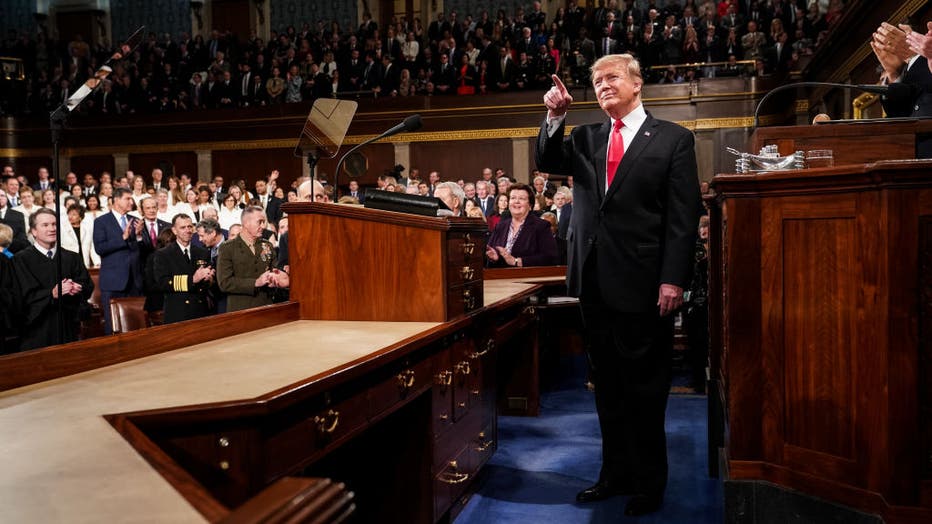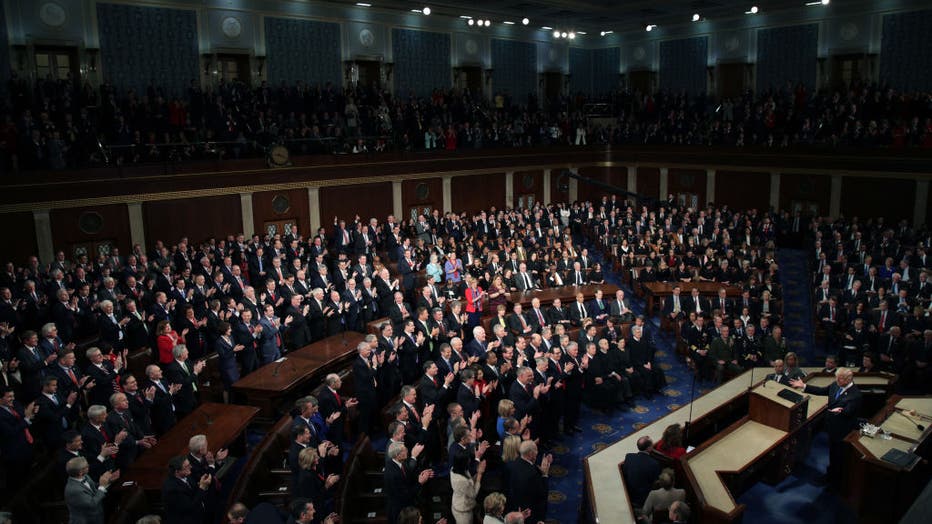Trump's joint remarks to Congress won't be a 'State of the Union' address: Here's why
WASHINGTON, D.C. - President Donald Trump will stand at the front of the U.S. House chamber tonight to address a joint session of Congress, the first of his second term in office.
It looks like the State of the Union, and will be carried on live television, just like those annual addresses are. But it's called something else: a joint address to Congress. And it has its origins in the first term of President Ronald Reagan.
Trump address to Congress time
Trump's remarks to Congress are slated to begin Tuesday at 9 p.m. in the U.S. House chamber.
How to watch Trump's 2025 address to Congress
What you can do:
FOX 5 NY will stream LIVE coverage of the address in the media player at the top of the article.
To stream from anywhere, download our mobile app, FOX LOCAL, to watch on your smart TV or phone. Click here to download. In addition, the address can be seen on our YouTube page.

WASHINGTON, DC - FEBRUARY 5: U.S. President Donald Trump arrives to deliver the State of the Union address in the chamber of the U.S. House of Representatives at the U.S. Capitol Building on February 5, 2019 in Washington, DC. President Trump's secon
Meanwhile, Democrats will offer a message in response to the joint congressional address. This year, Michigan Sen. Elissa Slotkin will give the response, which can also be seen on FOX 5 NY, as well as our YouTube page.
Why is it not called the State of the Union?
Dig deeper:
The U.S. Constitution requires that the president updates Congress and recommends policies, although the founding document doesn't specify precisely when that address should take place.

WASHINGTON, DC - JANUARY 30: U.S. President Donald J. Trump arrives for the State of the Union address in the chamber of the U.S. House of Representatives January 30, 2018 in Washington, DC. This is the first State of the Union address given by U.S.
Usually, presidents will deliver those remarks in January or February, reflecting on events of the previous year and outlining their policy priorities for the coming one. The message used to be known as "the President’s Annual Message to Congress." In 1934, President Franklin D. Roosevelt began referring to it as the "Annual Message to Congress on the State of the Union."
The backstory:
Shortly after he was sworn in for his first term in 1981, Reagan addressed a joint session of Congress, remarks that were called "Address Before a Joint Session of the Congress on the Program for Economic Recovery," according to The American Presidency Project, at the University of California at Santa Barbara.
Presidents George H.W. Bush and Bill Clinton followed suit in their own first years in office, with 1989 and 1993 messages both entitled "Administration Goals." In 2001, President George W. Bush's speech was his "Budget Message."
According to the American Presidency Project, the impacts of these first-year speeches should be considered to have the same heft as the State of the Union addresses that follow in subsequent years. And, just like the State of the Union address, the opposing party to the one that occupies the White House gives a brief speech in response, which, like the president's remarks, is televised.

